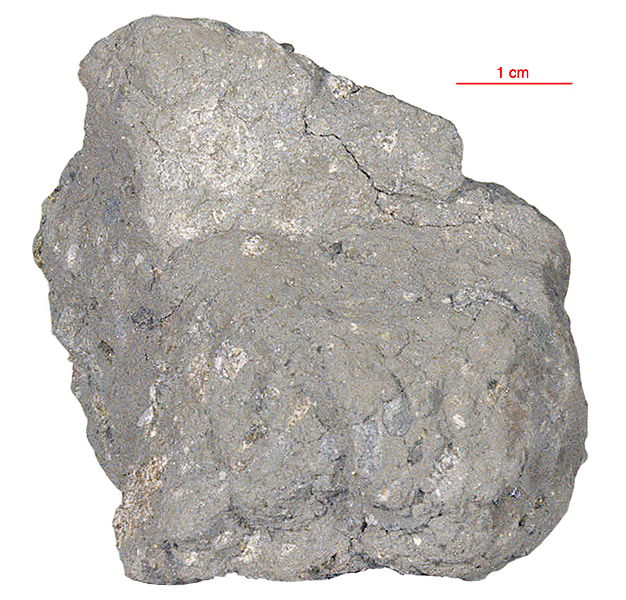
Fact sheet
At the end of the third EVA during Apollo 15, the astronauts collected loose undocumented samples from the regolith as ‘grab’ samples. These included basalts and 15558, a large friable regolith breccia. The residue from this bag (about 38 pieces) was numbered together as 15565. Sample 15565 is made up of numerous friable pieces, all with the same general appearance. Several have patina covered surfaces with micrometeorite pits indicating that there is more than one rock represented. However, it is equally probable that these are all pieces derived from breakup of 15558 – a similar lithology. 15565 is a welded breccia with 50% glassy matrix enclosing 20% lithic clasts, 19% mineral clasts, 10% glass particles and 10% glass beads. There is a high KREEP component.
The sample weighed 822.6 grams before analysis and has not been dated.
Further details of this and other Apollo samples are here: http://curator.jsc.nasa.gov/lunar/
Extravehicular activity (EVA) is any activity done by an astronaut outside a spacecraft beyond the Earth's appreciable atmosphere.
The Apollo 15 landing site was in the Apennine Highlands, and close to Hadley Rille — a long, narrow winding valley. Approximately 76 kg of lunar material, including soil, rock, core-tube and deep-core samples, were returned to Earth.
This mission was the first flight of the Lunar Roving Vehicle which allowed the astronauts to venture further from the Lunar Module than in previous missions. During three periods of extravehicular activity, or EVA, on July 31st, and August 1st and 2nd, Scott and Irwin completed a record 18 hours, 37 minutes of exploration, travelling 17.5 miles, in the first car that humans had ever driven on the Moon.
Apollo 15 was launched on 26 July 1971.






